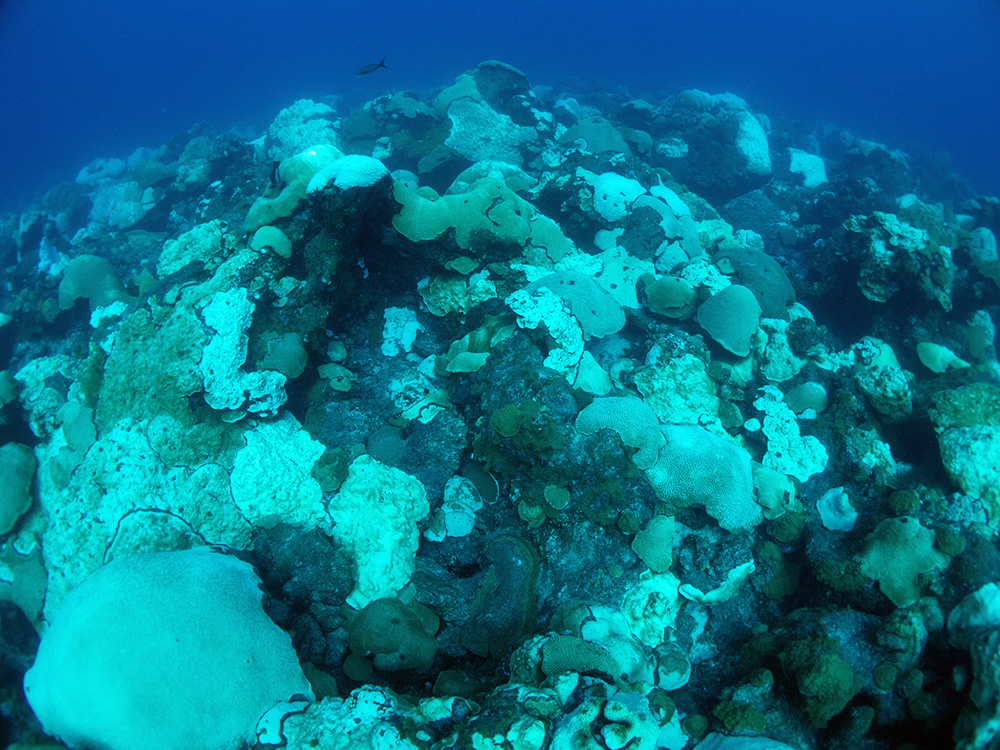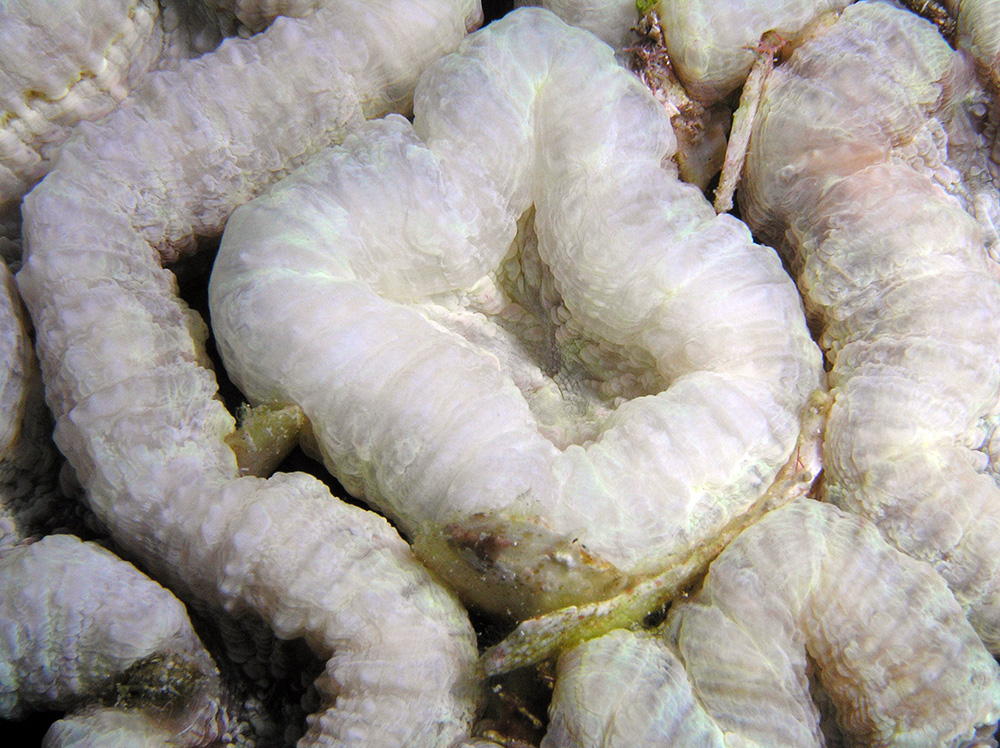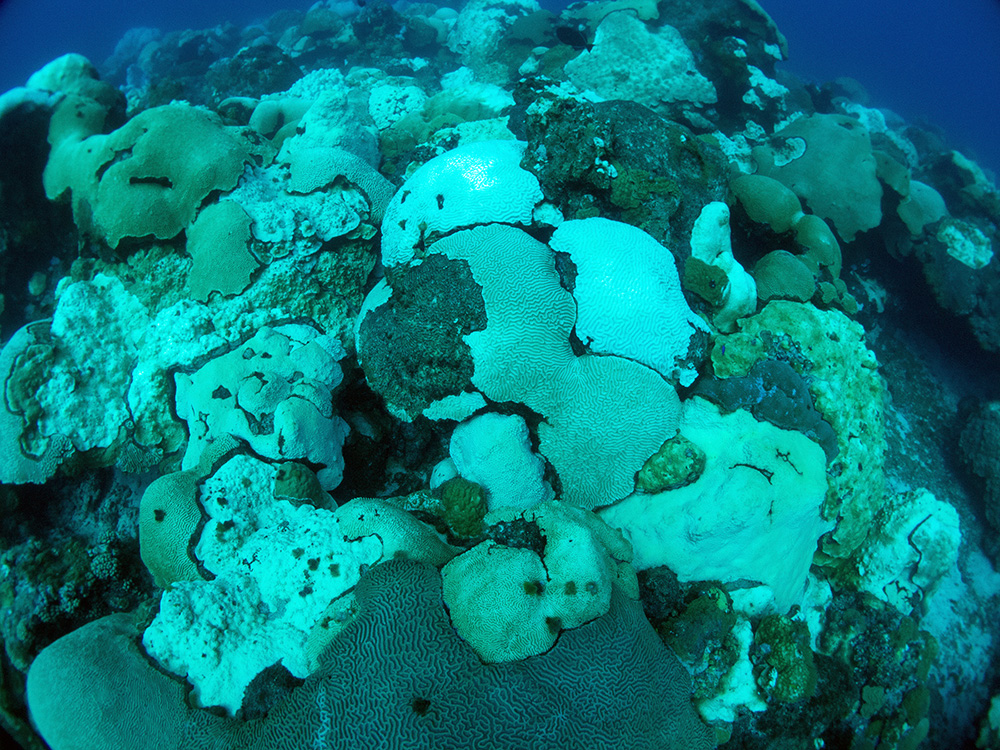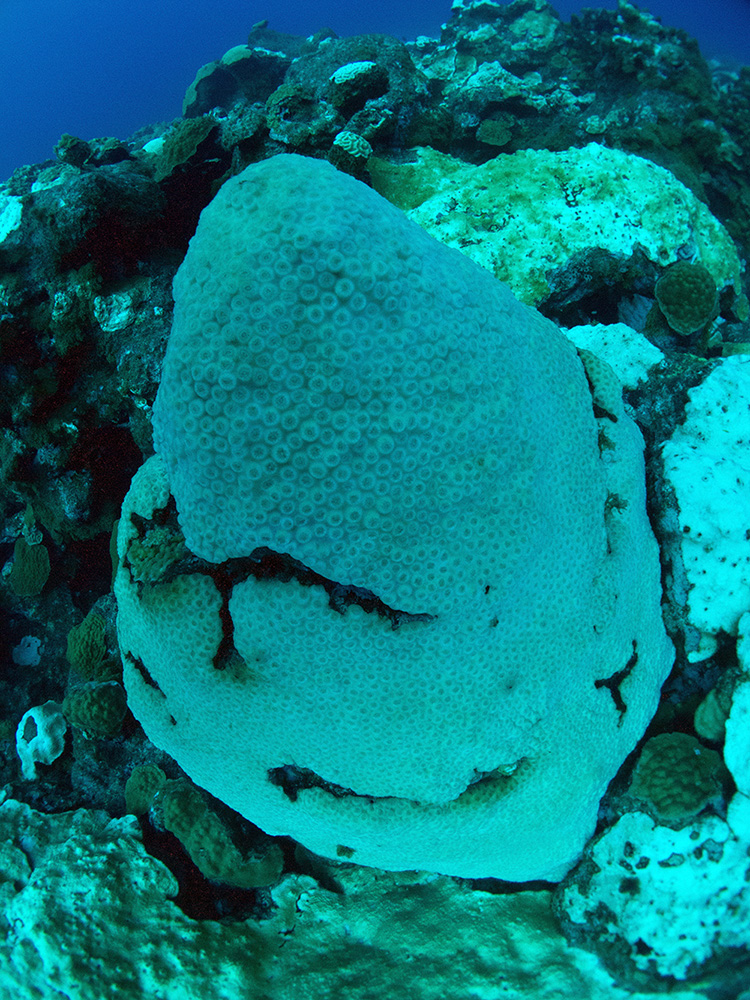Major Coral Bleaching Event
October 12, 2016
On the heels of the mass mortality event in July 2016, the corals of NOAA's Flower Garden Banks National Marine Sanctuary are now faced with a separate major bleaching event. Sanctuary researchers report that almost 50% of the coral colonies in a study site at East Flower Garden Bank were bleached or paling (in the process of bleaching) as of October 5, 2016. Sea surface temperatures have been over 30°C (86°F) for 85 days of the past four months, putting the sanctuary in the midst of one of the worst coral bleaching events on record. While the past week has seen temperatures drop slightly to 29°C (84°F), if these warm water conditions continue, the corals may starve and die.

Coral bleaching happens when corals expel their symbiotic algae (zooxanthellae) as a result of some kind of stress event—in this instance, persistent elevated water temperatures (over 30°C or 86°F). The algae living in the tissue of the coral polyp provide food (through photosynthesis) and give the coral their color. So, when the algae are not present, the tissue of the polyps is mostly clear and the white skeleton of the coral shows through. This creates the bleached, or stark white, appearance. It also leaves the corals without a majority of their food supply.

The sanctuary’s coral reefs have experienced coral bleaching in the past. Until now, the worst year was 2005 when about 45% of the corals bleached or paled. Other bleaching years of note were 1995 and 2010, but none of these events caused significant coral mortality. Coral scientists agree that increased levels and frequency of coral bleaching are correlated to elevated water temperatures driven by our changing climate.

Last week, the FGBNMS research team, along with partners from Texas A&M Galveston and Moody Gardens, collected photographs from permanent photo stations within a 100m x 100m study site at East Flower Garden Bank. These stations are photographed annually as part of the long-term monitoring project – a partnership with the Bureau of Ocean Energy Management and the National Marine Sanctuary Foundation. This program has been in place for over 25 years. The value of these repetitive photographs is the ability to track individual corals over time, especially during an event such as this.

Preliminary analysis of last week's images from the shallow stations on the reef (60-80 feet deep) show that approximately 46% of the coral colonies were affected (about 24% paling and 22% bleached). At the deep stations (100-130 feet deep), 15% of the coral colonies were affected (11% paling and 4% bleached).

The research team will return to the sanctuary soon to collect data at West Flower Garden Bank, and will continue monitoring the bleached corals over the coming months. Hopefully the stressful temperature conditions will ease and the corals will recruit or replace their symbiotic algae, allowing them to recover. Looking at recent sea surface temperatures, scientists are hopeful that things are starting to cool off. Only time will tell.


For more information, contact flowergarden@noaa.gov.

